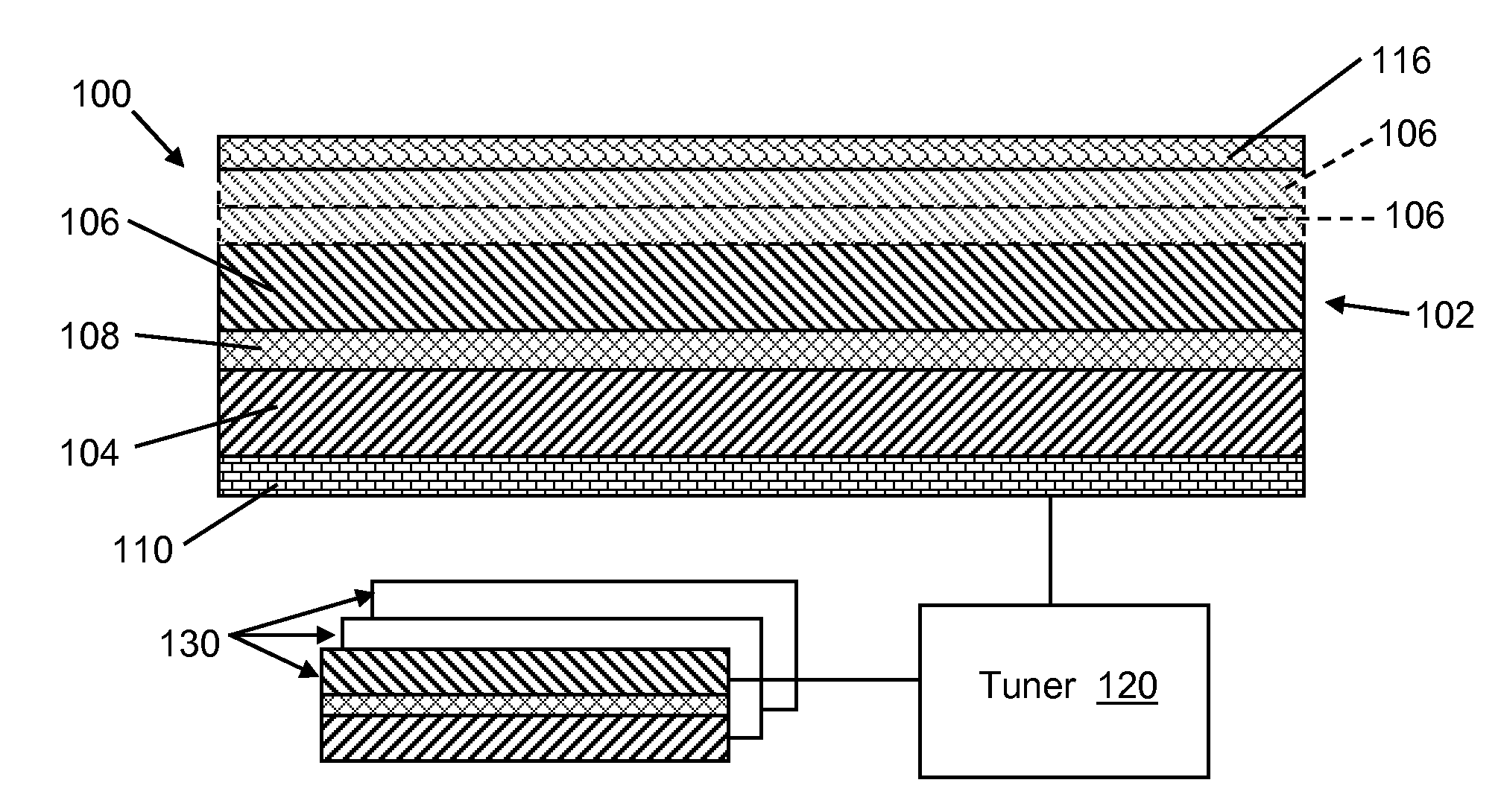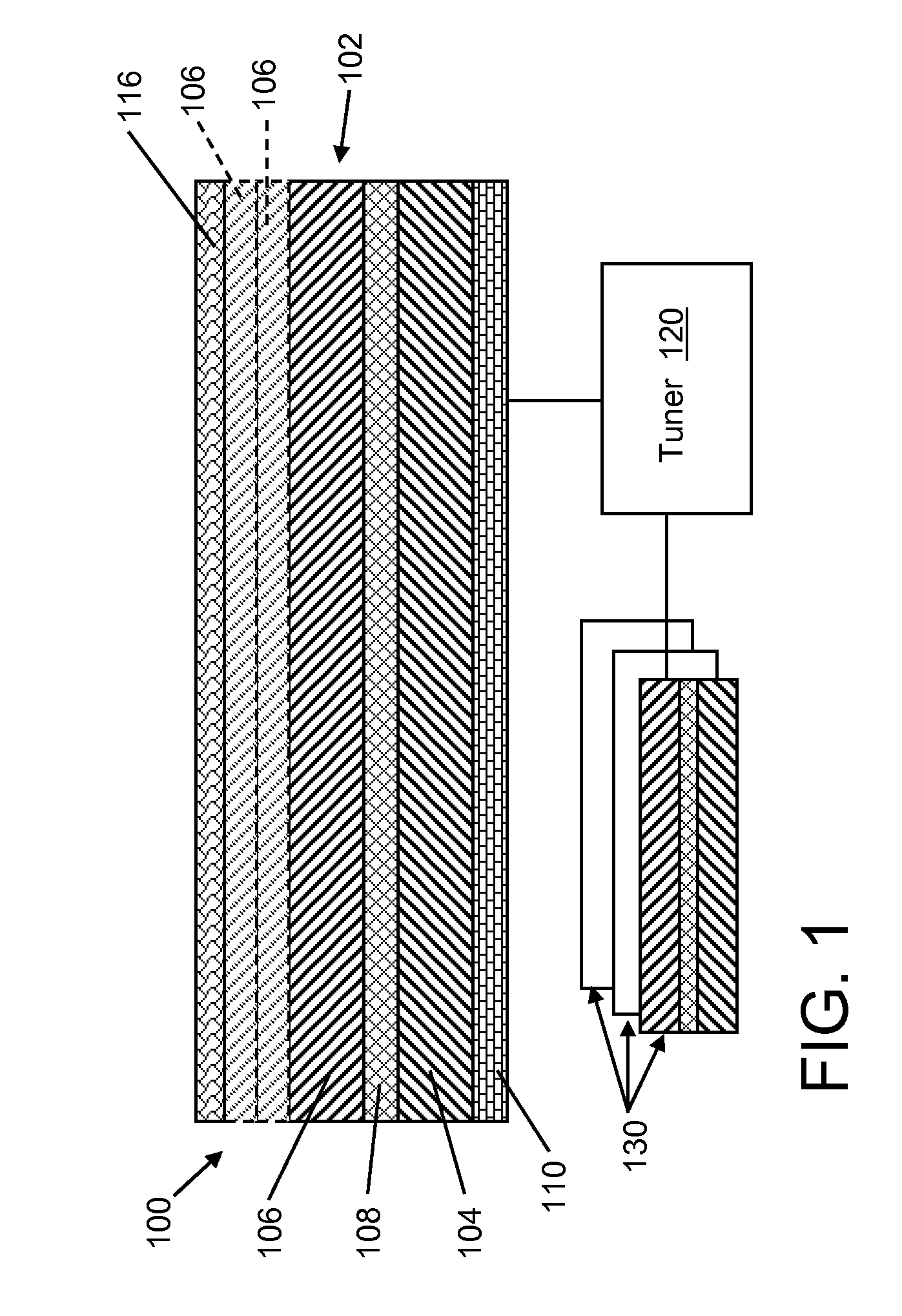Design structure for electrically tunable resistor
a design structure and resistor technology, applied in the field of integrated circuit (ic) chips, can solve the problems of cost, limited deposition materials, and control of resistan
- Summary
- Abstract
- Description
- Claims
- Application Information
AI Technical Summary
Benefits of technology
Problems solved by technology
Method used
Image
Examples
Embodiment Construction
[0019]Referring to FIG. 1, one embodiment includes a method of forming a resistor 100. First, a plurality of layers 102 of different materials is provided. As shown, plurality of layers 102 includes a first resistive layer 104 and at least one second resistive layer 106. Any number of second resistive layer(s) 106 may be employed. Resistive layers 104, 106 may include any now known or later developed resistive material. However, in one embodiment, resistive layers 104, 106 each include a conductive material such as a metal. Where metals are used, resistive layers 104, 106 of, for example, iron (Fe) and cobalt (Co), respectively, may be employed. First resistive layer 104 may include a first metal material and at least one second resistive layer 106 may include at least one other different metal material. Other materials may also be employed including but not limited to chromium (Cr), copper (Cu), silver (Au), gold (Ag), aluminum (Al), ruthenium (Ru), platinum (PI), tantalum (Ta), mo...
PUM
 Login to View More
Login to View More Abstract
Description
Claims
Application Information
 Login to View More
Login to View More - R&D
- Intellectual Property
- Life Sciences
- Materials
- Tech Scout
- Unparalleled Data Quality
- Higher Quality Content
- 60% Fewer Hallucinations
Browse by: Latest US Patents, China's latest patents, Technical Efficacy Thesaurus, Application Domain, Technology Topic, Popular Technical Reports.
© 2025 PatSnap. All rights reserved.Legal|Privacy policy|Modern Slavery Act Transparency Statement|Sitemap|About US| Contact US: help@patsnap.com



